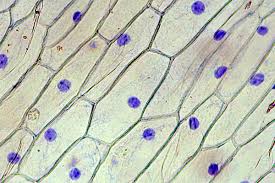Author's
note: In this essay my goal was to write a well written informative essay about
the Puritans, making sure my vocabulary was right for the subject and my
understanding of the subject was clear. I also worked on organizing my thoughts
before I started so that I didn't ramble and have no conclusion.
The idea of
traveling to North America during the sixteen and seventeen hundreds appealed
to a very wide variety of people in Europe. The new land caught the attention
of people seeking a different government, freedom of religion or unlimited land
to lead to a wealthy future. These people saw America as an opportunity to
start over, and influence others to help lead to a future they desired. This
concept of renewal was especially valued by the Puritans, one of the many
groups of people that settled in America.
During the time of
American colonization, the Puritans had become more and more in disagreement
with the English churches. They thought the churches were straying too far from
the concepts and traditions laid out in the Bible. The fact that there were still
several similarities between the English and Roman churches did not settle well
with the Puritans either. The other disagreement the Puritans had with England
was the educational system. They believed in a system where all children should
be required to learn how to read and write, so that they are well educated when
reading the Bible, laws, and other important influencing literature of that
time. The Puritans were outsiders in England, so they moved to America to start
fresh, with people of similar beliefs.
The first group of
Puritans, led by John Winthrop and containing about 1,000 people, that settled
in New England left Europe in 1630. The group established the Massachusetts Bay
Colony, creating a government that was strictly religion based, hoping that other
colonies would model after their example of leadership. Only men involved in
the church were able to vote for governor and representatives to the general
court. The Puritans were also responsible for founding the first school in
America. This school soon became known as Harvard, named after John Harvard, a
member of the colony.
Many of the
Puritan's thoughts and actions have had a huge impact on the way United States
citizens think and act today. Although several of the concepts founded by the Puritans have diminished over time, the mindsets of people in America today
reflect the mindset of the Puritans very well. The
desire to challenge the government to be better, the desire to change religion,
and the desire to be free to choose were all concepts initiated by the thoughts
of some of America’s first settlers. Even views from individuals during that
time are valued today. Roger Williams, an outcast in his society because of his
thoughts and ideas, was the best known challenger of the relationship between
religion and government. He believed that government should in no way be
influenced by any religion. By looking at the first amendment we can tell that
being told what religion to practice didn't settle well with the founders of
this country.
Although America has
been influenced by a lot of different cultures, some of the ideas contributed by the Puritans are still around today. Even
though society has grown with time, we still have government text proving that
the Puritans had important and valid ideas. Our government was founded
by people who disagreed with their own government and wanted fair and equal
rights. This is very apparent in our country today, and is something that we're
constantly looking at to make improvements. The puritan ideas and beliefs were very innovative due to their background of opposition to government, which made them extremely valued when creating a new system. Maybe the Puritan thoughts on society has diminished, and maybe their thoughts have long since been exposed, but a part of America was founded by this innovative way of thinking, and it will long remain in our minds as we continue to improve our government and the laws laid out by the constitution.



